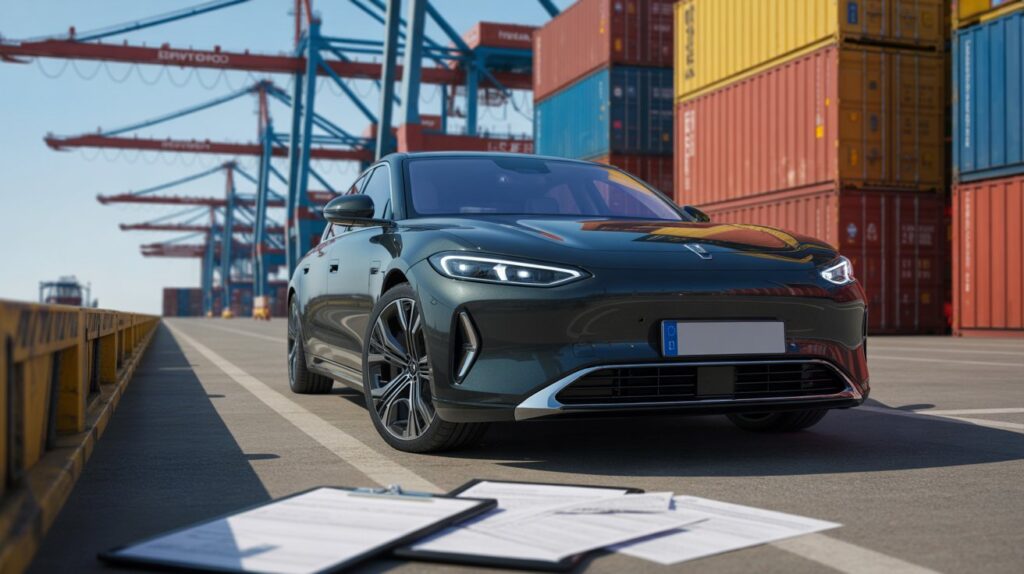Sending a vehicle across the Atlantic takes planning and the right company. Car shipping from Europe to the US can feel complex at first, but once you understand the process, it becomes straightforward. This guide covers preparation, shipping methods, paperwork, and customs steps to help you manage the process from start to finish.
Understanding Car Shipping Europe to the US
Car shipping from Europe to the US involves moving vehicles by sea freight, usually from ports in Germany, France, Italy, or the Netherlands to the East Coast of the United States. The two main shipping methods are Roll-on/Roll-off (RoRo) and container shipping. RoRo ships are used for operable vehicles that can be driven onto the deck, while container shipping is ideal for high-value or vintage cars that need extra protection.
When choosing a shipping method, the decision depends on the type of car, the budget, and the level of protection required during transit. Some owners prefer container shipping for privacy and added safety, while others select RoRo for a lower cost.
The entire process can take from three to six weeks depending on the port of departure, the carrier schedule, and customs clearance time. Planning ahead can help avoid delays and extra costs.
Preparing Your Vehicle for Shipment
Preparation affects the safety and speed of car shipping from Europe to the US. Start by cleaning the vehicle inside and out, then photograph it from every angle. This helps document its condition before transport. Remove personal items and loose accessories because they are not covered by marine insurance.
Next, check for fluid leaks and mechanical problems. Many shipping companies refuse cars with visible leaks for safety reasons. Leave the fuel tank only one-quarter full to reduce weight and risk. Disable alarms to avoid accidental activation during loading or unloading.
Inspect tires, brakes, and battery condition. A car that starts and drives smoothly makes RoRo loading much easier. Finally, keep one full set of keys ready for the shipping crew.
Required Documents and Customs Process
Documentation plays a central role in car shipping from Europe to US. Missing papers can delay release at the destination port. The main requirements include:
-
Original car title and proof of ownership
-
Bill of sale or purchase invoice
-
Copy of the owner’s passport or ID
-
Export declaration from the European country
-
Import approval and customs entry forms for the United States
At the destination port, U.S. Customs and Border Protection (CBP) will inspect the vehicle. They confirm the VIN, emissions compliance, and safety standards. Cars less than 25 years old must meet Environmental Protection Agency (EPA) and Department of Transportation (DOT) rules. Older models may qualify for exemptions under the classic car category.
Paying import duties and taxes is part of the process. The rate depends on the vehicle’s classification and country of origin. A reliable shipper or customs broker can handle this paperwork on your behalf.
Choosing a Shipping Company
Selecting the right company makes car shipping Europe to the US smoother and more reliable. Look for firms that specialize in transatlantic vehicle transport and hold necessary licenses and insurance coverage. Check reviews, company history, and port network coverage before booking.
Ask for a clear quote that includes ocean freight, port fees, insurance, and customs handling. Avoid very low offers since they often come with hidden costs. A transparent agreement with written terms helps prevent disputes later.
Reliable shippers keep you updated from pick-up to delivery and provide tracking tools for peace of mind.
Shipping Costs and Insurance
The cost of car shipping Europe to the US usually ranges from $1,200 to $5,000, depending on distance, port charges, and transport type. RoRo is typically more affordable than container shipping, but it offers less privacy and protection.
Insurance is highly recommended. Basic carrier liability covers only limited damage, while full-coverage marine insurance protects against loss, theft, and weather-related issues. Confirm that the coverage matches your car’s value and review the claim process before shipment.
What Happens After Arrival
Once the car arrives in the United States, customs officers inspect it and verify paperwork. The importer or their agent pays applicable duties, and the car is released after clearance. From there, the vehicle can be delivered by truck to the final address.
If the car requires EPA or DOT modifications, it must be taken to an authorized facility before being registered in a U.S. state. Keep all receipts and inspection documents, as they will be needed for registration and insurance.
Final Advice on Car Shipping Europe to US
Planning, preparation, and proper documentation are key to a successful car shipment. Choose a trusted carrier, check every paper twice, and track your car throughout the trip. With careful handling and the right support, your car will arrive safely and ready for use on U.S. roads.




